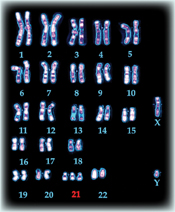14 Assessment
14.1 Human Chromosomes
Understand Key Concepts
A normal human diploid zygote contains
23 chromosomes.
46 chromosomes.
44 chromosomes.
XXY chromosomes.
A chart that traces the inheritance of a trait in a family is called a(n)
pedigree.
karyotype.
genome.
autosome.
An example of a trait that is determined by multiple alleles is
cystic fibrosis.
ABO blood groups.
Down syndrome.
colorblindness.
What is the difference between autosomes and sex chromosomes?
Is it possible for a person with blood type alleles IA and IB to have blood type A? Explain your answer. (Refer to Figure 14–5).
Think Critically
Predict What are the possible genotypes of the parents of a male child who is colorblind?
Design an Experiment Fruit fly sex is determined by X and Y chromosomes, just as it is in humans. Researchers suspect that a certain disease is caused by a recessive allele in a gene located on the X chromosome in fruit flies. Design an experiment to test this hypothesis.
14.2 Human Genetic Disorders
Understand Key Concepts
A mutation involving a change in a single DNA base pair
will definitely result in a genetic disease.
will have no effect on the organism's phenotype.
will produce a positive change.
may have an effect on the organism's phenotype.
Cystic fibrosis is caused by
nondisjunction of an autosome.
a change of three base pairs in DNA.
nondisjunction of a sex chromosome.
deletion of an entire gene from a chromosome.
Malaria is a disease caused by a
gene mutation.
defect in red blood cells.
bacterium found in water.
parasite carried by mosquitoes.
Analyze the human karyotype below. Identify the chromosomal disorder that it shows.

What is a chromosomal disorder?
Describe two sex-chromosome disorders.
Think Critically
Infer Can a genetic counselor use a karyotype to identify a carrier of cystic fibrosis? Explain.
Table of Contents
- Formulas and Equations
- Applying Formulas and Equations
- Mean, Median, and Mode
- Estimation
- Using Measurements in Calculations
- Effects of Measurement Errors
- Accuracy
- Precision
- Comparing Accuracy and Precision
- Significant Figures
- Calculating With Significant Figures
- Scientific Notation
- Calculating With Scientific Notation
- Dimensional Analysis
- Applying Dimensional Analysis




